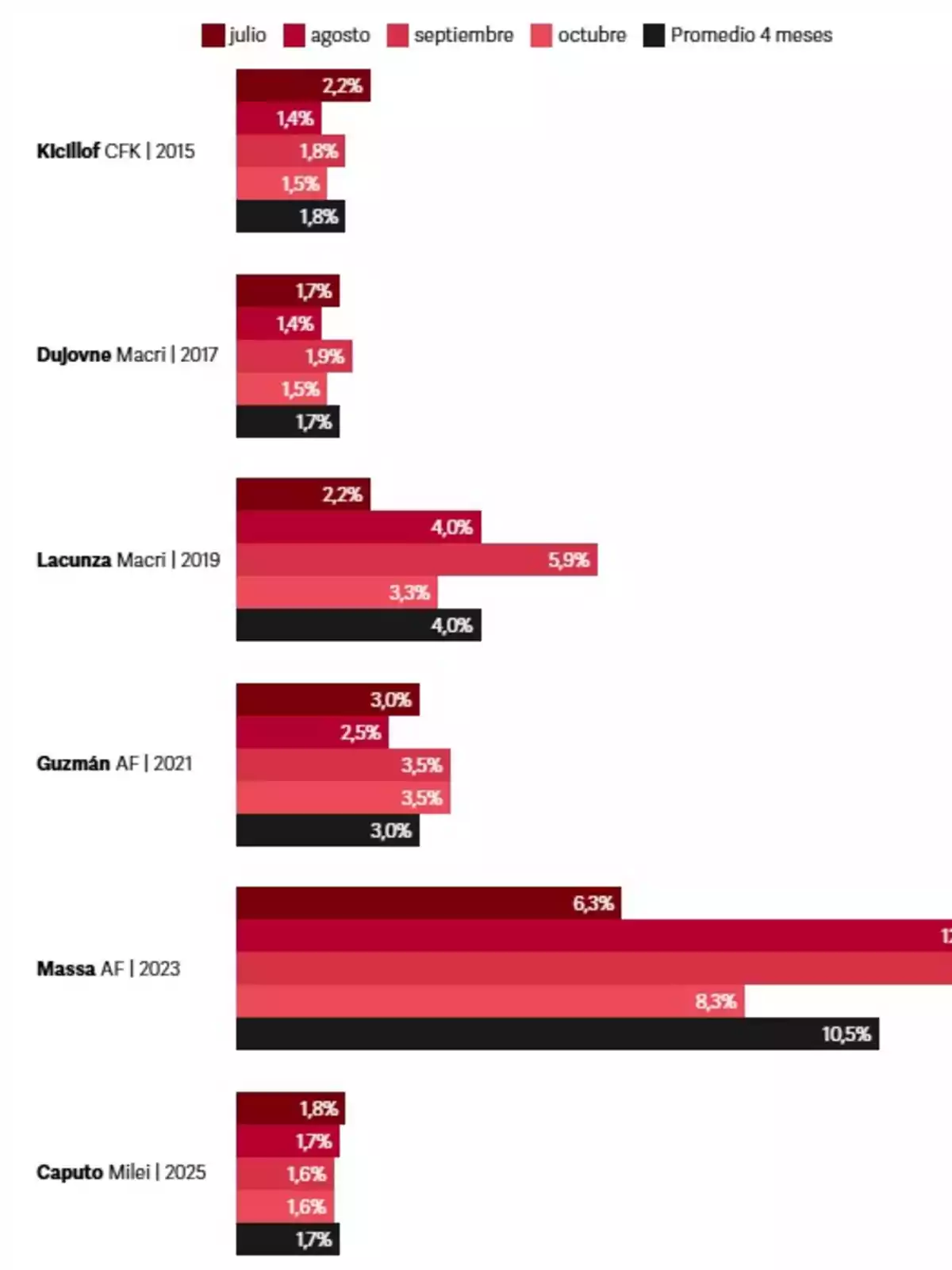
Milei's government would reach the polls with the lowest inflation in almost 10 years.
The estimated average inflation for July and October 2025 is almost equal to that recorded in 2015 and 2017
The legislative elections in October will take place in an unusual context for recent years, as, thanks to the successful economic plan of the Government of Javier Milei, it will be the first time in almost 10 years that Argentines will go to the polls with lower monthly inflation.
According to market estimates, the consumer price index could start with "1" at that time, a scenario comparable to the elections of 2015 (presidential) and 2017 (legislative). This record clearly contrasts with what happened in 2019, 2021, and especially in 2023.
This Wednesday, the April inflation data will be released, and it is anticipated that it could be below 3%. Economist Ramiro Castiñeira, from the consultancy Econométrica, projects that the month's index closed around 2.7%, well below that of the previous month.
For May, the Market Expectations Survey (REM) of the Central Bank estimates inflation of 2.6%, although some analysts foresee an even lower figure. "The first week of May was calm, there's still time, but it could be around 2%," said Camilo Tiscornia, from C&T Economic Advisors.

Measurements from various consultancies support this trend. Fernando Marull, for example, indicated that in the first days of May, food prices increased by just 0.1% weekly, with few increases concentrated in products like fish, coffee, yerba, and fruits. This implies a deceleration compared to the 0.7% weekly of the previous week and projects a monthly inflation for the food sector of 1.7%, lower than April's 1.9%.
Meanwhile, Miguel Kiguel considered the first indicators of May "encouraging," while Equilibra detected "a marked deceleration at the start of the month" and projected a general index of 2.5%.
On the other hand, the REM of the Central Bank published last Thursday also anticipates that inflation could drop below 2% in the months leading up to the elections, especially in July.

A survey conducted by the media outlet Clarín compared the average inflation between July and October of this year with those of the same period in the electoral cycles between 2015 and 2023. The estimated average for 2025 would resemble those recorded in 2015 and 2017.
Additionally, the elections of 2019, 2021, and 2023 not only took place with higher inflation rates but also in contexts of inflationary acceleration. This year, on the contrary, could mark the first time in a decade that the data for August and September (the last before the October vote) show a declining inflation.
More posts: